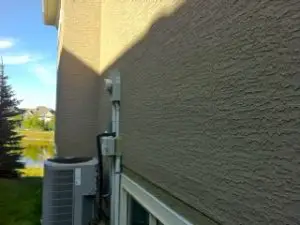Acrylic stucco
Stucco refers to a low lasting, low maintenance siding material that improves the value and appearance of your home. This is used to enhance new constructions or to renovate existing siding. Proper stuccos give a beautiful and durable siding for a home. Acrylic stucco is one of the most preferred choices.
Ingredients of Acrylic stucco
Acrylic stuccos are also called the elastomeric stucco finish or synthetic stucco. They are available with numerous manufacturers, each differing in their quality and of course, and the price. The usual price for these stuccos is around $12 per sq. feet and can increase based on quality and requirement. Acrylic stuccos are made from polymers and/or acrylic resins. Precisely, they resemble paint and can have sand in them, providing high definition finish. Acrylics are available in the form of 5 gallon buckets weighing between 50-70 pounds. These are wet mixes. Though they usually come in an unmixed white form, pre-mixed acrylics can be availed upon request.
Acrylic stucco buckets
The cost of an acrylic stucco bucket is higher than its traditional stuccos (around $40-50 per 5 gallon bucket). Each bucket covers 100-250 sq. feet, based on the texture to be used. A variety of final textures can be achieved. This depends on the sand and other aggregates used in the stucco and in some cases, needs to be mentioned to the manufacturer in advance.
Colors
Acrylic Stuccos have rich and vibrant colors, adding to their appeal. Acrylic stucco colors are consistent thus, providing no practical color variation between any two buckets. Apart from this, there are a wide variety of colors to choose, but they are available in liquids and come in containers or small bottles. Applying of colors begins with the usual primer coating. This is followed with an initial layer applied to seal the walls and prolonging the working time of the material. The next layers can be sprayed and uniformity of the material must be maintained. These stuccos are water resistant and are suitable for one coat, three coats and even EIFS stuccos.
Advantages and Disadvantages
Using Acrylic stuccos has its own share of advantages and limitations. The most prominent advantage is its elasticity, giving more resistance against hairline cracks. Mixing can be done with a drill having a paddle mixing attachment.
The limitations are its cost. When comparing with a cement based finish, its cost is high. This is due to the polymers used. Also, skill is required as acrylic stucco dry faster than traditional finish.

